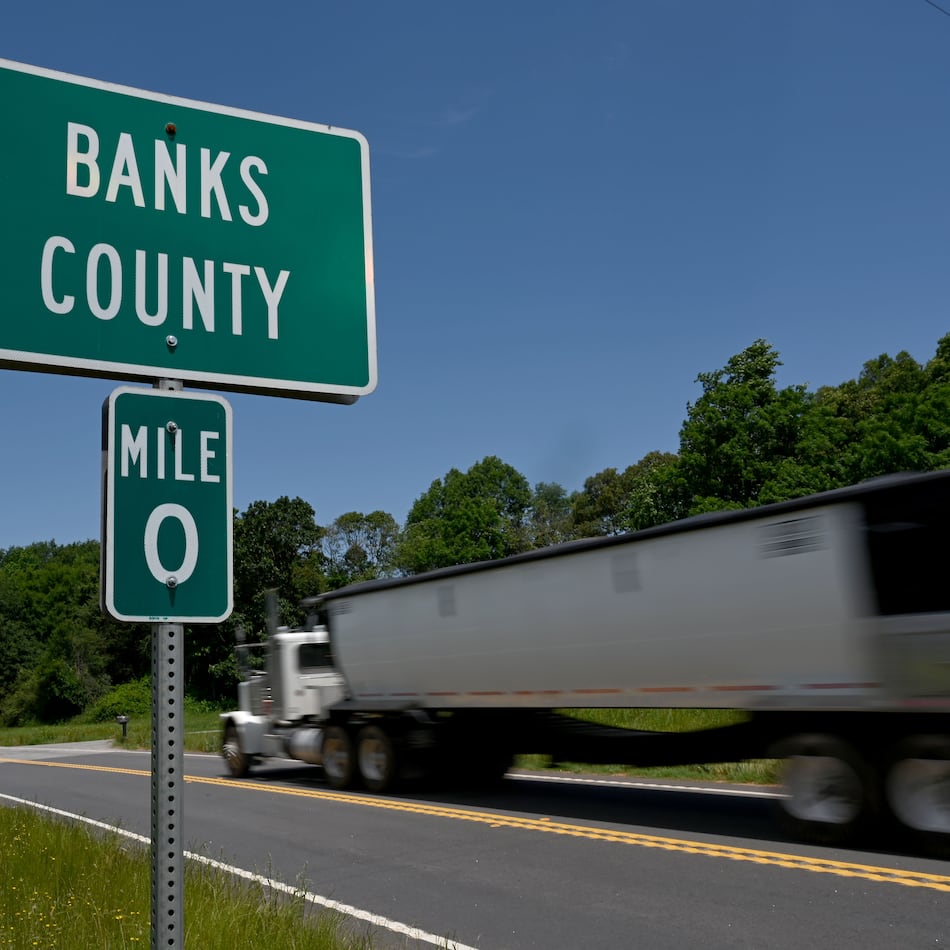When I-85’s HOV lane becomes a toll lane from Spaghetti Junction into Gwinnett County next year, drivers who don’t want to pay more money had better pay attention.
Even as motorists are asked to pay more the farther they drive, they will have fewer opportunities to get out.
That was one of the revelations last week when state engineers and experts explained the project to reporters.
The new concept sparked some questions that have yet to be answered and some answers that raised eyebrows.
The toll lane will have fewer than half as many entry-and-exit points as the current HOV lane has. The toll lane will provide just one toll exit for four I-85 exits: Steve Reynolds Boulevard, Pleasant Hill Road, Boggs Road and Ga. 120/Duluth Highway. So toll-lane drivers looking for Ga. 120 will have to leave the toll lane three I-85 exits ahead of time. There's no physical barrier preventing people from getting in and out of the toll lane after that, but crossing the double lines is illegal.
One I-85 driver said she didn't think that eliminating so many legal exits would prompt more people to exit illegally -- because so many people exit illegally already. "People will still be double-crossers" -- her word for violators who cross the solid double line -- said Beth Tuttle, who drives the HOV lane daily.
There may be kinks, but the toll provides everyone an option, state officials say. Here is the lowdown from representatives of the State Road and Tollway Authority, which will run the toll system; the Georgia Regional Transportation Authority, which will run the new Xpress commuter buses; and the state Department of Transportation, which is building the road project.
Q: There is a limited space to exit the toll lane. What if the traffic outside the lane is slow or stopped?
A: Then drivers will have to slow down to merge with regular traffic, even if that slows down the toll lane, said Ben Rabun, the DOT's manager on the project. However, Rabun said, drivers will be warned long before that that their chance to exit is coming up, and he expected toll lane traffic to be light enough with big gaps that people may be able to speed up again and not lose much time overall.
Q: Will the lane always run at 45 mph?
A: When state officials such as former DOT Commissioner Harold Linnenkohl were first selling the concept, they said the lane would "guarantee" mobility. Now that reality is at hand, they are more cautious. DOT spokeswoman Teri Pope said Friday that 45 mph was "the goal speed to maintain."
Q: When will crews close lanes for roadwork?
A: Starting later this month, they may close lanes until July, on weekends and overnight. The worst of it will probably start late this year, after pieces of the project are manufactured and contractors start to install them, said DOT's area engineer, Harold Mull.
Q: The current HOV lane has 14 entry-and-exit points each way in that stretch. The toll lane will have just six southbound and seven northbound. Why half as many?
A: The toll concept "is designed for longer trips," said DOT spokeswoman Teri Pope, not for dodging in and out. Part of that is a safety issue, she said, since Interstate crashes occur where people change lanes. "It's not a way to force people to pay more toll," DOt spokeswoman Karlene Barron said. "Safety is key."
Q: What if there’s a crash in the toll lane, or police or HERO trucks use it as a diversion path around a crash in the main lanes. Won't that slow or stop the toll traffic?
A: In that case the DOT would alert the SRTA, which would identify the affected toll-lane drivers and not charge them the toll.
Q: What if drivers in the next lane suddenly need to swerve into the toll lane to avoid debris -- will the toll sensors send them a ticket?
A: No answer yet for this one. SRTA spokeswoman Malika Reed Wilkins answered simply that "If you enter the lane and you're not registered, you will be charged." After more discussion she said that "we'll work through those issues closer to launch." The first step for the driver will be to call the SRTA customer service center, she said.
Q: How can toll drivers avoid paying if they pick up two occupants on the spur of the moment?
A: Even those who drive free must be registered as free drivers or risk a ticket. Toll drivers who unexpectedly pick up enough occupants to drive free must find a way to change their SRTA account status before they get into the lane. They can do that on the Internet or by calling SRTA, Wilkins said.
Q: I need a car pool!
A: The Clean Air Campaign is offering $40 monthly gas cards for up to a year for people who register to form new three-person carpools. Metro Atlantans can find new car pool partners or van pools on the MyRideSmart.com database.
Q: Will the tolls pay enough to operate the road?
A: Not for at least the first three to five years, Wilkins said. But the goal isn't to make money. The goal is to create a free-flowing space on the highway no matter how much traffic increases.
Q: Is a $110 million federal grant paying off the road project?
A: No. In addition to the federal grant, the state budgeted $66.7 million of its own money for the project. That federal grant is mostly going to a $121 million Xpress bus expansion that's paired with the toll road. Creating the toll road system will cost about $56 million, according to the State Road and Tollway Authority.
Q: The state intends to monitor how well the road works. If it finds problems, is the state open to making changes?
A: "Absolutely," Rabun said.
Q: There will be a cap on the toll range. If someday there’s such huge congestion and demand for the toll lane that even at the highest price it’s swamped with traffic and slowing to a crawl, will SRTA close it?
A: No answer on that one yet.
Q: Is this just another tax?
A: No, it's optional, Barron said. Besides, with limited road funds, the state is running out of options, Rabun said. "Twenty years into the future traffic is going to be 50 percent more. We cannot put enough lanes out there to handle that traffic. What do you want me to do?"
About the Author
The Latest
Featured

